Bio Pest

What is the relationship between climate variability, pest outbreaks, and food safety ?
Climate variability can lead to increased pest populations, impacting food safety through contamination, physical damage, and toxin production. Effective monitoring, integrated pest management, and adaptation strategies are crucial to address these challenges.

What is the connection between biodiversity and food security ?
The connection between biodiversity and food security is crucial, as biodiversity contributes to crop pollination, natural pest control, soil health, and genetic resources for crop improvement. Loss of biodiversity can lead to reduced crop yields, increased use of pesticides, loss of genetic diversity, and economic impacts on farmers. Sustainable agriculture practices such as agroforestry, conservation agriculture, integrated pest management, and crop rotation/intercropping can help maintain biodiversity while ensuring food security.
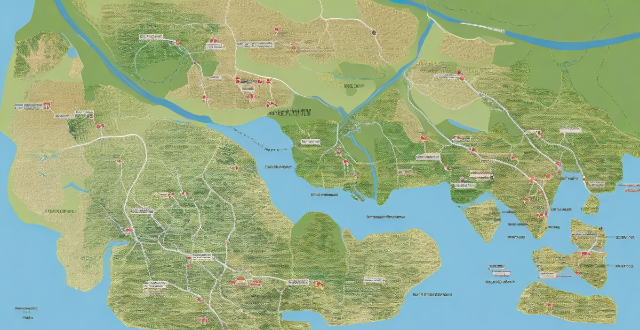
How has global warming affected agricultural practices and food security ?
Global warming has significantly influenced agricultural practices and food security worldwide, affecting areas such as altered climate conditions, pest and disease management, crop variety and production, and food security concerns. These changes include irregular rainfall patterns leading to droughts and floods, water scarcity, extreme temperature fluctuations causing heat waves and cold spells, increased pest infestations and new pest species introduction, elevated disease risks, changes in crop yields and shifting production regions, altered planting seasons, price volatility, supply disruptions, nutrient depletion, and loss of biodiversity. Farmers must adapt to these new realities to ensure sustainable food systems for the future.
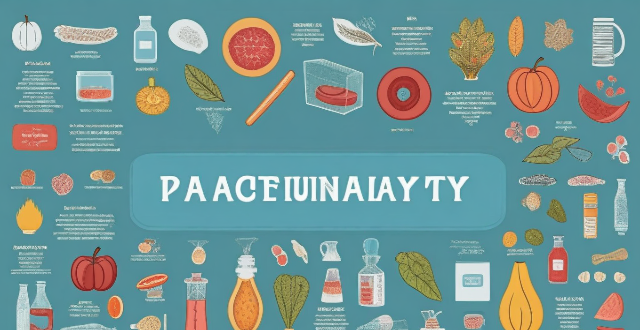
How do agricultural practices influence biodiversity ?
Agricultural practices significantly impact biodiversity, affecting ecosystem services like pollination and soil health. Monoculture reduces biodiversity due to habitat loss and pesticide use, while polyculture enhances it through diverse habitats and reduced chemical inputs. Organic farming benefits biodiversity by avoiding synthetic chemicals and promoting natural pest control, whereas conventional farming can harm it through pesticide toxicity and nutrient runoff. Land management practices like tillage disrupt soil ecosystems, while no-till farming preserves them. Water management also plays a role; sustainable practices like drip irrigation conserve water resources and support aquatic life. Adopting sustainable agricultural methods can help conserve biodiversity while maintaining productive systems.
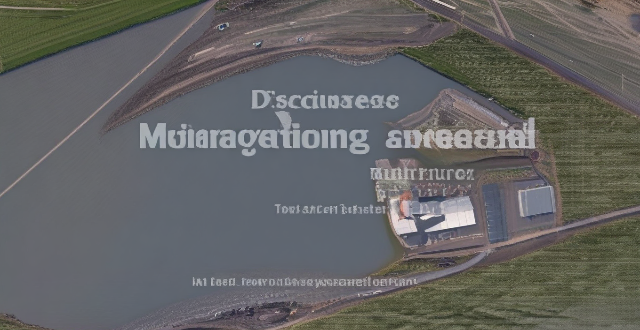
What are some emerging trends in the field of energy storage materials research ?
The text discusses the latest trends in energy storage materials research, focusing on solid-state batteries, flow batteries, metal-air batteries, supercapacitors, redox flow batteries, hybrid energy storage systems, nanostructured materials, smart grid integration, thermal energy storage, and organic/bio-based materials. Each section provides a brief overview of the technology's advantages and current research challenges.

Why are the leaves of my indoor plant turning yellow ?
Yellowing leaves on indoor plants can indicate various issues, including improper watering, nutrient imbalances, unsuitable lighting, temperature stress, pest infestations, diseases, physical damage, or natural aging. Addressing these concerns involves adjusting watering habits, providing adequate light, using appropriate fertilizers, maintaining ideal temperatures, monitoring for pests and diseases, handling plants gently, and regular pruning. Understanding and responding to these factors can help restore the plant's health and prevent future leaf discoloration.

How much does it cost to obtain a tourist visa ?
This detailed guide outlines the cost implications and requirements for obtaining a tourist visa to the People's Republic of China as of July 2024, using the process in the United States as an example. The guide covers visa types, required documents, additional requirements, cost implications, and the application procedure. It also highlights recent simplifications in the document requirements and emphasizes the importance of meeting all specified requirements and being prepared for associated costs.

How does climate change affect biodiversity and ecosystems ?
Climate change, driven by human activities, significantly impacts biodiversity and ecosystems through various mechanisms such as temperature increase, changes in precipitation patterns, sea level rise, ocean acidification, extreme weather events, and altered species interactions. These effects can lead to extinction risk, habitat loss, food web disruption, and imbalances in ecosystem dynamics. Mitigating climate change and adapting to its consequences is crucial for preserving biodiversity and ecosystems.
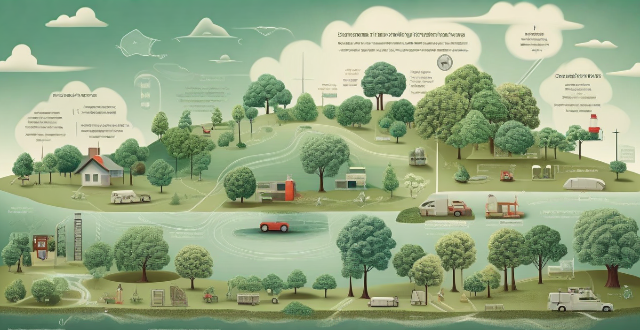
How do climate change and biodiversity loss intersect ?
Climate change and biodiversity loss are interconnected issues that impact each other significantly. Climate change can lead to habitat loss, altered migration patterns, and changes in prey-predator relationships, all of which can result in reduced populations or even extinction for some species. On the other hand, biodiversity loss can reduce carbon sequestration, compromise soil health and water regulation, and impair ecosystem services that help mitigate climate change. Urgent action is needed from all stakeholders to address these challenges and protect our planet's fragile ecosystems.

What is the impact of climate change on biodiversity and conservation law ?
Climate change is a significant threat to biodiversity, affecting species distribution, abundance, and behavior. This has implications for conservation law, which aims to protect and manage biodiversity. The impact of climate change on biodiversity includes habitat loss and fragmentation, altered ecosystem functioning, and increased risk of species extinction. Conservation law must evolve to address these challenges, incorporating resilience measures into conservation strategies and fostering collaboration across sectors. By taking a proactive approach, we can help ensure that future generations continue to benefit from the diverse array of species and ecosystems that make up our planet's natural heritage.

What impact do climate predictions have on agriculture and food security ?
Climate predictions significantly impact agriculture and food security by enabling informed decision-making among farmers. These decisions cover aspects such as crop planning, pest and disease management, water conservation, livestock care, and adaptation to market dynamics. By considering predicted weather patterns, temperature changes, and precipitation levels, farmers can optimize crop yields, reduce losses due to pests and diseases, conserve water resources, ensure proper nutrition for livestock, and adapt to changing market conditions. This results in sustainable agricultural practices that contribute to global food security.

How do I prevent pests from infesting my indoor plants ?
To prevent pests from infesting your indoor plants, maintain proper hygiene, optimize growing conditions, utilize natural repellents and treatments, try physical removal methods, consider biological control, and use chemical control as a last resort. Regular plant inspection is also key for early detection of potential problems.

In what ways does climate change exacerbate existing food insecurity issues ?
Climate change exacerbates food insecurity by causing unpredictable weather, altering crop yields, increasing pest and disease outbreaks, contributing to biodiversity loss, and impacting fisheries. Addressing these challenges requires a comprehensive approach that includes adaptation strategies, sustainable agriculture practices, and efforts to mitigate the effects of climate change.

What are the consequences of climate change for wildlife and ecosystems ?
Climate change has significant consequences for wildlife and ecosystems, including habitat loss, changes in species distribution, impacts on biodiversity, altered ecological processes, invasive species spread, pest outbreaks, and human health risks. It is crucial to take action to mitigate these impacts by reducing greenhouse gas emissions and implementing conservation measures.

How can I maintain a clean and healthy living environment at home ?
Maintaining a clean and healthy living environment is crucial for family well-being. Tips include regular cleaning, proper ventilation, minimizing clutter, pest control, healthy eating habits, personal hygiene, waste management, and water conservation. These practices promote physical health, mental well-being, and overall happiness for the family.

How do celebrities manage their online presence and reputation on social media ?
Celebrities manage their online presence and reputation on social media by hiring a social media manager, maintaining consistency across platforms, engaging with fans, promoting positive messages, handling criticism gracefully, and monitoring their image. These strategies help them maintain a positive online presence while connecting with fans and promoting their work effectively.

How does climate change influence nutrition and dietary health through changes in food production ?
Climate change affects nutrition and dietary health by altering food production, impacting crop yields, nutrient content, pest and disease pressure, and the availability and accessibility of food. Sustainable agricultural practices and adaptation are crucial for mitigating these effects and ensuring global food security.

How does climate change affect forest ecosystems ?
Climate change affects forest ecosystems in numerous ways, including changes in temperature and precipitation, shifts in tree species distribution, alterations in fire regimes, increased pest and disease outbreaks, and reduced carbon sequestration. These impacts can lead to heat stress for trees, altered seasonal events, changes in tree growth rates, increased wildfire risk, and even tree mortality during extreme droughts. Invasive species may also outcompete native trees, further altering the structure and function of forest ecosystems. Addressing these challenges will require a multifaceted approach that includes reducing greenhouse gas emissions, protecting and restoring forests, and adapting to changing conditions.
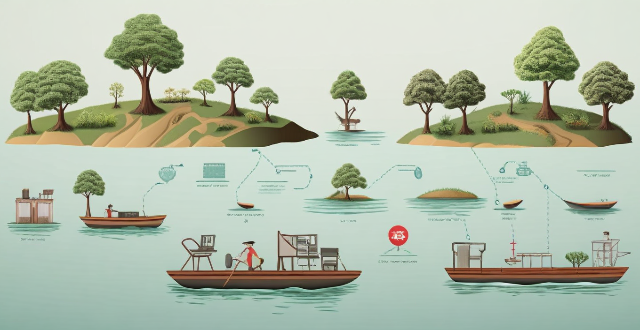
What is the potential of rainwater harvesting as a supplement to traditional water supplies ?
Rainwater harvesting offers environmental, economic, and water security benefits. It reduces runoff and replenishes groundwater. Economically, it saves on utility bills and provides a backup supply. During droughts or emergencies, harvested rainwater is a crucial resource. While generally cleaner than treated municipal water, it may require filtration. Communities can reduce urban heat island effects and raise awareness through rainwater projects. Challenges include legal restrictions and initial costs. Successful implementation requires proper design, maintenance, and pest management.
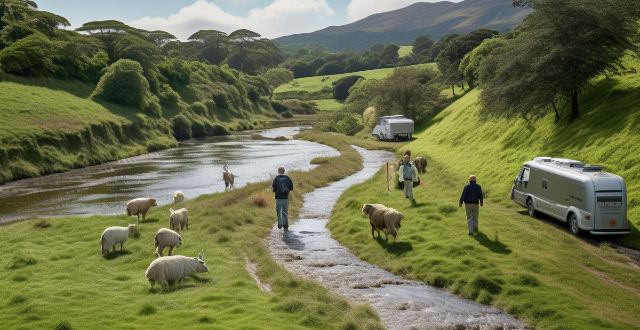
How can climate models be used to improve agricultural practices and food security ?
Climate models play a critical role in enhancing agricultural practices and ensuring food security by forecasting weather conditions, mitigating climate change effects, enhancing crop yield potential, and aiding in policy making. Applications include adapting to climate variability through crop diversification and improved plant breeding, strengthening resilience through water management and soil health maintenance. The use of these models is crucial for adapting to changing environmental conditions and ensuring global food security.
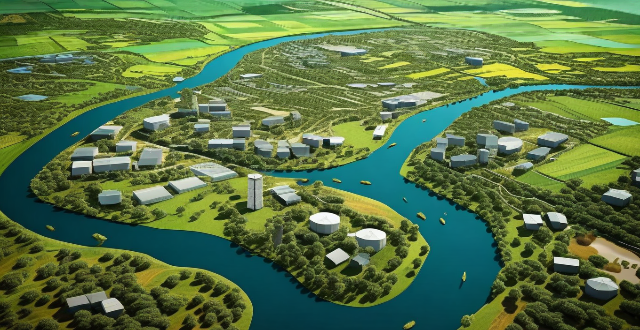
How do agricultural practices impact the environment ?
Agriculture is a vital sector for human survival, but its practices can have significant impacts on the environment. Deforestation and land use changes, water pollution, air pollution, soil degradation, energy consumption, and loss of biodiversity are all potential negative effects of agriculture. However, adopting sustainable practices such as conservation tillage, integrated pest management, precision farming techniques, and diversified cropping systems can minimize these impacts while maintaining agricultural productivity. It is crucial for farmers, policymakers, and consumers to prioritize environmentally friendly agricultural practices to ensure a sustainable future.
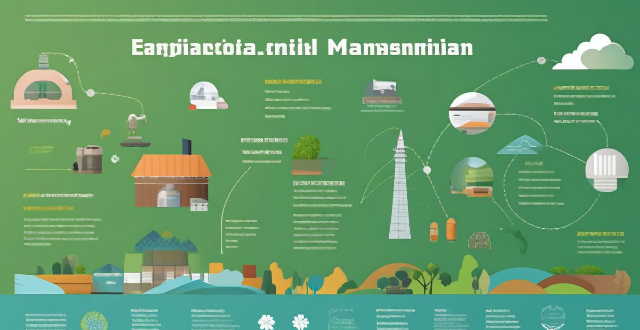
How does climate adaptation impact agricultural practices ?
Climate adaptation is crucial for maintaining agricultural productivity and sustainability amidst shifting environmental conditions. It impacts agricultural practices in several ways, including changes in planting schedules, use of drought-resistant crops, water management techniques, soil health management, livestock management, pest and disease management, diversification of crops and income streams, adoption of smart technologies, and policy and infrastructure support. By embracing these changes, farmers can continue to produce food while minimizing the environmental impact of their operations and building resilience against future climate challenges.

What is the impact of climate change on agricultural employment ?
Impact of Climate Change on Agricultural Employment: - Reduced Crop Yields due to droughts, floods, and loss of biodiversity can lead to job losses. - Changes in Cropping Patterns, such as shifting to new crops or shortened planting seasons, may require different skillsets and reduce employment opportunities. - Increased Pest and Disease Pressure can result in more labor for monitoring and management but also potential job losses from crop failures. - Infrastructure Damage and Displacement caused by extreme weather events can affect farming operations and employment levels. - Adaptation and Resilience Efforts, including developing resilient crop varieties and adopting sustainable farming practices, can create new job opportunities.

How do celebrities establish and maintain a successful personal brand ?
Celebrities establish and maintain a successful personal brand by defining their brand persona, building a strong online presence, being consistent in messaging and imagery, networking and collaborating with others, staying true to themselves, and continuously learning and evolving. A strong personal brand helps celebrities stand out in their industry and build a loyal fan base.

What are the implications of climate change for future generations ?
Climate change has significant implications for future generations, including rising sea levels, extreme weather events, food security, and health impacts. Rising sea levels can lead to flooding, displacement of communities, and loss of habitat for marine life. Extreme weather events can cause loss of life, destruction of infrastructure, and long-term changes in ecosystem structure and function. Climate change can also affect global food production, particularly in regions that are already vulnerable to food insecurity. Changes in temperature and precipitation patterns can affect crop yields, pest and disease outbreaks, and water availability for agriculture. Additionally, climate change can have significant impacts on human health, including increased risk of infectious diseases, respiratory illnesses, and mental health problems. The challenges presented by climate change require urgent action from individuals, governments, and organizations around the world to mitigate its effects and ensure a sustainable future for all.
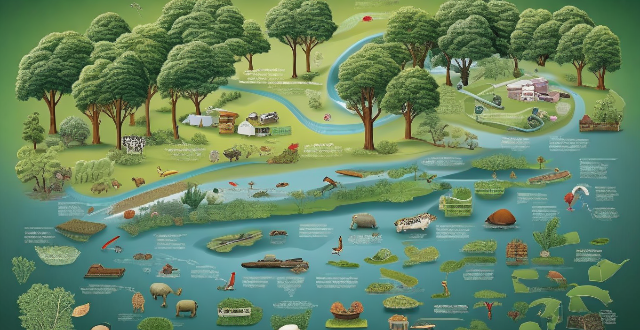
How do rising temperatures and altered precipitation patterns influence crop yields and food availability ?
This article explores the impact of global climate change on agriculture, specifically focusing on rising temperatures and altered precipitation patterns. It highlights how these changes can affect crop yields through increased evapotranspiration, altered growth cycles, pest and disease pressure, and changes in pollination. Additionally, it discusses how rising temperatures can impact food availability by altering the distribution of crops, increasing post-harvest losses, and causing market price fluctuations. The article also examines the effects of altered precipitation patterns on crop yields and food availability, including water stress, nutrient leaching, flooding, soil erosion, and irrigation needs. Finally, it emphasizes the importance of understanding these impacts and developing strategies to mitigate their effects on crop yields and food availability to ensure food security for future generations amidst a changing climate.
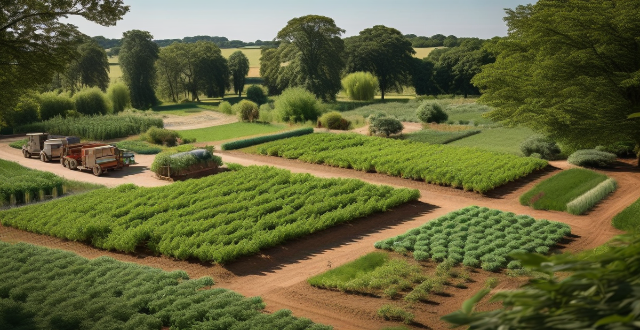
What strategies can be implemented to mitigate the effects of climate change on food systems ?
Strategies to Mitigate the Effects of Climate Change on Food Systems include sustainable agriculture practices, agroforestry and reforestation, climate-resilient crop breeding, livestock management, food waste reduction, policy and advocacy, and research and development. These efforts aim to build more resilient food systems capable of withstanding the challenges posed by climate change, ensuring food security for future generations.
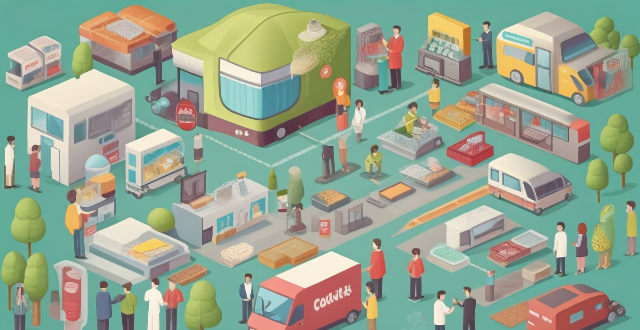
What measures should be taken to ensure food safety during transportation ?
Ensuring food safety during transportation is crucial for maintaining the integrity of food products in the supply chain. Measures include proper temperature control, good sanitation practices, careful handling, personnel training, and documentation and tracking. By implementing these measures, the risk of foodborne illnesses can be significantly reduced, ensuring that food products remain safe and wholesome throughout the transportation process.

What are the best practices for managing water resources in agriculture ?
Proper management of water resources is crucial for sustainable agriculture, and there are several best practices that can help farmers conserve and use water efficiently. These include soil moisture monitoring, drip irrigation, mulching, rainwater harvesting, crop rotation and intercropping, efficient irrigation scheduling, integrated pest management, water-saving plants, and maintenance of irrigation systems. By following these practices, farmers can effectively manage their water resources while maintaining productivity and profitability in their agricultural operations.

What are the implications of climate change on different asset classes, such as real estate or commodities ?
Climate change has significant implications for different asset classes, including real estate, commodities, financial assets, and alternative investments. Real estate values can be affected by rising sea levels, heat island effects, and water scarcity. Commodities such as energy, agricultural products, and metals may face supply disruptions and changes in demand. Financial assets like stocks and bonds may be impacted by carbon risk and the increasing importance of environmental, social, and governance factors. Alternative investments, including private equity and venture capital, may see increased interest in clean technology and sustainable real estate. Overall, investors must consider these climate-related factors when making investment decisions and incorporate sustainability into their portfolios.